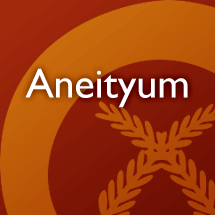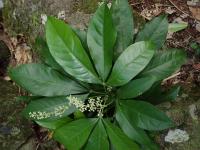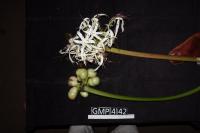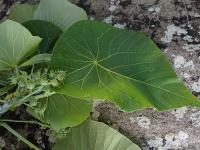Your search for * in food / wrapping has returned 26 entries
inmehei
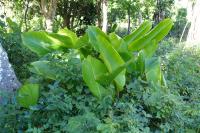
n. herb to 1. 5 m tall, sterile. Growing in weedy patch behind buildings on edge of trail. (collection: Michael J. Balick #4986)
Example: People use the leaves of this plant to wrap lap-lap for cooking on the earth oven or when boiling foods. The leaves can also be used as serving plates and to cover the stones on the earth oven.
bookmarkinpa
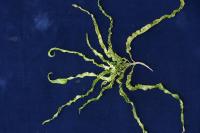
n. shrub, 1. 25 m tall (collection: Gregory M. Plunkett #3525)
Example: The young leaves are edible, after boiling for 5 minutes. A piece of coconut and a pinch of salt is wrapped in the leaves and eaten. The mature leaves are used to wrap food such as pig or cow meat and cooked in an earth oven. Tie this bundle with a piece of Pandanus fiber to secure it before putting in the earth oven. Both the green and ripe fruits are edible. This plant is used in kastom ceremonies. For a peace ceremony, if there is an argument, then this leaf is used to make peace between the parties. For many ceremonies, put on top of taro, kava or food pile, . For peace ceremony, when a person has food in an offering, give a branch of this plant to the other party to symbolize that the conflict is over. It is a "message plant" that conveys a meaning that people do not have to say out loud. When a stranger walks through a village with this plant in his or her hand, people know there is no threat or problem. When a young man first shaves, people give him a necklace of this plant. In the old days, hair was pulled out of young men, now people use razor blades.
bookmarkinpa
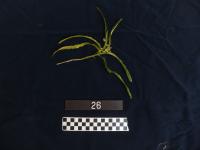
n. shrub. Growing in the village. Cultivated. (collection: Ashley A McGuigan #26)
Example: 1a. To stay healthy while pregnant - grate 1 coconut with nekei leaves, about a handfull (8). And 8 inpa leaves and 8 niditau leaves. Pound all of this together and squeeze juice out and bath in this then jump into a clear river to wash it off. 1b. Handful of leaves mashed with grated coconut and put in a shell, heat stones and put in shell, then take hot liquid to rub on body of woman who have just delivered to make their bodies healthy again, back to normal – when they deliver they are in huts, then wash with this and then come out of the huts and rejoin family. 2. Symbolic plant for peace (name means peace). 3. Message plant – put small tips of leaves in hair or make hat out of it and people know you come in peace. 4. When giving a gift, put this leaf on the gift, as in a basket – people wear them they are happy and peaceful – it is symbolic of Aneityumese people – so even when the people leave the island they will grow this plant. 5. People bathe with this leaf, mixed with grated coconut and cover body and hair to smell good and be strong. 6. Mosquito repellant, build fire, put green leaves on top, smoke and aroma chases mosquito away. 7. Take top of leaf with 3 young leaves and put in hair as there is the belief that this plant symbolizes the trinity. So it protects people. If a person from the island goes elsewhere and is faced with black magic they bathe with a handful of leaves, boil them and bathe with the liquid to remove the spell. 8. Decorate people with this leaf day feasts, weddings, and other events – very sacred.
bookmarkintop̃asiej ura
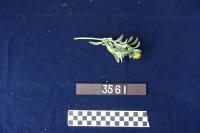
n. stoloniferous herb, 15 cm tall (collection: Gregory M. Plunkett #3561)
Example: In the past the ancestors learned to cook the leaves of this species with fish in an earth over and then eat the leaves as well as the fish. Today, fish are wrapped with small leaves and then covered with lap-lap leaf (Polyscias) and cooked in an earth oven.
bookmarknaha
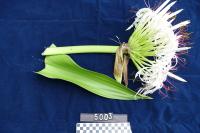
n. herb to 1 m, flowers white (collection: Michael J. Balick #5003)
Example: The leaves are used to wrap fish for cooking in an open fire. If you eat a bad fish and begin to feel the effects of it a few hours later, such as with Ciguatera illness, cut the base of the stem of this plant and let the sap drip into a half coconut shell with coconut water in it, drink the shell and it will make the person vomit out the bad food. It does not taste good but is very effective in making a person vomit as it contains a toxic compound.
bookmarknalgaj
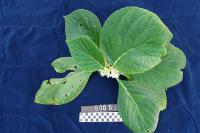
nam̃caca
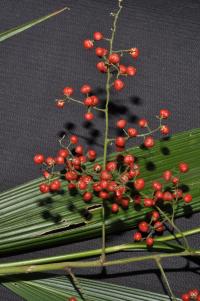
n. vine climbing in understory, growing in rainforest along river. (collection: Gregory M. Plunkett #4057)
Example: 1. This plant is named in relation to a winged fish. The leaves are rough and resemble the body the fish. 2. The leaves of this plant are used to wrap grated taro or manioc. After it is fastened with rope and boiled or baked.
bookmarknamñiañia
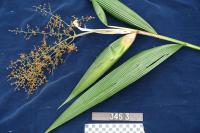
namniañia
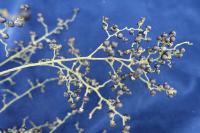
nateg
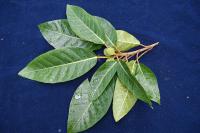
n. tree, 3. 5 m tall (collection: Gregory M. Plunkett #3489)
Example: The fruits of this species are edible. Take the ripe fruits, squeeze coconut milk into the ripe fruits and cook in an earth oven. The leaves are used to wrap small fish caught in a net for cooking in an earth oven. For clothing, strips of bark are peeled and the inner bark removed, and this is used as a strap around the waist, and leaves are tucked in front and back. This is traditional clothing when other clothing is not worn.
bookmarknateng
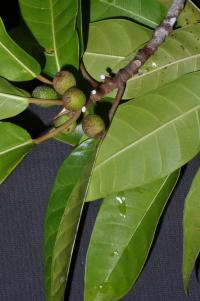
naupiñiña
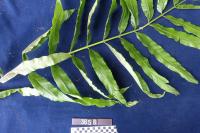
n. terrestrial fern, growing in secondary forest along the river. Leaves c. 2. 25 m long. (collection: Gregory M. Plunkett #3656)
Example: Put several leaves of this species together to wrap food, especially the fresh water eel, and to carry plants of taro, kava, holding the leaves over one’s shoulder to carry these crops.
bookmarknauyerop̃
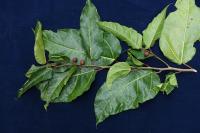
n. tree, 2 m tall (collection: Gregory M. Plunkett #3487)
Example: 1. To cure spirit sickness of the niteitau. Use plants that also end with "au" : niditau, intoutau, naoyerop. Go to the top of the plant to get the soft leaves of the plants niditau, intoutau, naoyerop, also take the bark. The person making the medicine should be holding the these leaves with a piece of nelmaha. Nelmaha means go away. The sick person chews the leaves and bark and swallows the juice spitting out the fiber into the nelmaha the medicine maker is holding. The medicine person then takes the spit out fiber in the nalmaha leaf and throws it into the sea in front of the village. 2. Edible fruits, when ripe or green, does not taste when green, but sweet when ripe. 3a. Leaves (young) are edible, for example wrap around coconut meat and eat or cook with island cabbage and other leaves, boil and add coconut milk and eat. 3b. The young leaves are edible, after boiling for 5 minutes. A piece of coconut and a pinch of salt is wrapped in the leaves and eaten. The mature leaves are used to wrap food such as pig or cow meat and cooked in an earth oven. Tie this bundle with a piece of Pandanus fiber to secure it before putting in the earth oven. 4. During big feast, use this a lot – circumcison or wedding feast, harvest leaves and wrap around meat and bake on earth oven – sometimes we cut down a whole tree to gather leaves. 5. To make men’s custom belt – split stem, peel outer bark off to take inner bark and peel it, tear end to make strap that can be tied. Dry in sun but not direct sunlight. 6. Older large trunks were burned by ancestors to keep fire going – did not need matches (lefre(?) matches) because embers would stay for days and when make a fire add smaller branches to make a flame.
bookmarknauyerop
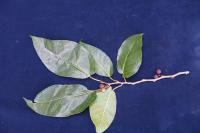
n. tree, 3 m tall (collection: Gregory M. Plunkett #3505)
Example: The young leaves are edible, after boiling for 5 minutes. A piece of coconut and a pinch of salt is wrapped in the leaves and eaten. The mature leaves are used to wrap food such as pig or cow meat and cooked in an earth oven. Tie this bundle with a piece of Pandanus fiber to secure it before putting in the earth oven. Both the green and ripe fruits are edible.
bookmarknauyerop̃
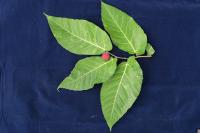
n. sparsely branched small tree, 3 m tall (collection: Gregory M. Plunkett #3209)
Example: The fruit is edible when ripe and when it is younger can be eaten with salt. The young leaves are eaten raw, after being rubbed with coconut meat and salt. Cover pork to be cooked in the oven with the leaves of this plant, tie them on with a rope made from Pandanus leaf and put taro on the fire as well. The oily part of the pig will mix with the taro and enhance its flavor.
bookmarknihivaeñ aeyec
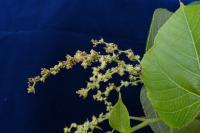
n. tree, 3 m tall (collection: Gregory M. Plunkett #3213)
Example: 1. When a person has a headache from being out in the sun too long, scrape the outer bark off of the stem of this tree, take scrapings of the inner bark, wrap with a leaf of breadfruit and put in a fire for 15-20 minutes. Not a hot fire, but only in the flame. Squeeze the water out of the bark when it is warm and rub all over the forehead and face to help the headache go away. 2. Use the stems of this tree as a stick to carry taro from the field, as the stick is strong but not too heavy. The taro is tied to each end to balance on a person’s shoulders. 3. Leaf used for wrapping local medicines. This is the best leaf and put it on the charcoal to heat it. 4. Good firewood.
bookmarknihivaeñ aeyhec
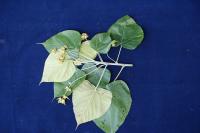
nihivaeñ p̃ap̃
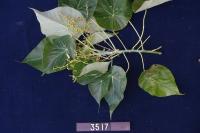
n. tree, 4 m tall (collection: Gregory M. Plunkett #3517)
Example: 1. The leaves of the young plant are used to wrap food for cooking on a fire. 2. The wood is used for temporary houses, for making rafters that are said to last a long time. 3. The wood is strong and used to carve paddles for the canoe. 4. It is also grown and used for firewood. 5. Firewood, (6) use as local plate. 7. On west side of island, take old coconut, fill with water, put lead into hole on end, take out and give to baby to drink and it will help the baby talk.
bookmarknijcel
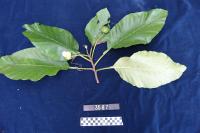
n. tree, 7-8 m tall (collection: Gregory M. Plunkett #3587)
Example: 1. If the preferred banana leaves are not available to wrap food for cooking, then use young leaves of this species and tie taro and fish for cooking. 2. Use leaves to wrap fresh water prawns and fresh water fish and cook them on charcoal. Use as a cup by making funnel out of leaf and drink from it. 3. Used for unspecified ritual activities.
bookmarknijcel
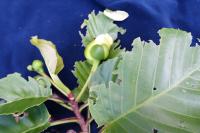
nilidie
n. leaves to put food on
bookmarknititan
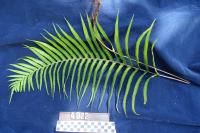
n. fern to 0. 75 m, sori brown. growing along trail. (collection: Michael J. Balick #4972)
Example: The fronds of this fern are used to wrap sting ray and shark meat, which have a great deal of moisture in them, for cooking on the earth overn. Wrap the fronds (leaves) around the meat and tie with a Pandanus string. Because they are not thick, broad, entire leaves, but rather have many places in them where water can drain out during the cooking process, it is said that these leaves are much better for preparing these two types of fish, as well as any other meat that contains a great deal of moisture. For cooking on the earth over, put these wrapped foods on top of any other leaves so that they do not touch the hot stones directly, and then cover with other leaves as well. Then place the hot stones on top of these wrapped meats.
bookmarknumurumu
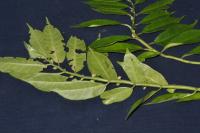
n. epiphyte on Syzygium tree, growing in secondary forest along trail above river. old fruits. (collection: Gregory M. Plunkett #3660)
Example: Put several leaves of this species together to wrap food, especially the fresh water eel, and to carry plants of taro, kava, holding the leaves over one’s shoulder to carry these crops. Used as a baby’s remedy for when the baby is crying too much because the parents are having to much sex. The baby will also be slow to grow and be thin. To remedy this, must wash the baby with the following mixture: nekei atimi (bark), nohos atimi (green skin of the stem), nepnatimi ataman (part not specified). Scrap about 1 inch cubed of the nekei atimi into your hand along with 1in x 4in of the first layer of the green skin of the banana stem (nohos atimi), and the top 8 leaves from about two separate branches of the nepnatimi ataman. Bind all ingredients together and pound them and put everything in the baby’s water for bathing. Wash the baby in water made with this mixture. Do not wipe the baby dry but let it air dry. The next day when you wash the baby with soap, you must re-wash them with the mixture again. Do this for 5 days with the same water mixture. It may small bad but that is okay. Finally on day 5, take the juice from the outter layer of skin on the stem of the banana, nohos atimi, and give a full spoonful of the juice to the baby to drink. Other plants can be added to the bathing water but these are the three primary ingredients.
bookmark